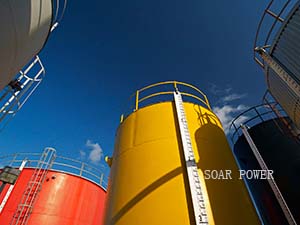 Heavy Fuel Oil (HFO), also known as “residual fuel oil”, is based on the high viscosity, tar-like mass, which remains after the distillation and subsequent cracking of crude oil in order to produce lighter hydrocarbon products, such as petrol , distillate diesel fuels and heating oil or feedstocks for lubricants. Heavy Fuel Oil (HFO), also known as “residual fuel oil”, is based on the high viscosity, tar-like mass, which remains after the distillation and subsequent cracking of crude oil in order to produce lighter hydrocarbon products, such as petrol , distillate diesel fuels and heating oil or feedstocks for lubricants.
The main components are alkanes, cycloalkanes and different carbon hydrides. The boiling range is between 300°C and 700°C. Due to its semi-fluid consistence, HFO has to be preheated to make it combustible in engines.
RMA, RMB, RMD, RME, RMG or RMK are the international trade names.
Cheap, but challenging
As a residual product, HFO is a relatively inexpensive fuel – it typically costs 30% less than distillate fuels (MDO/MGO). It thus became the standard fuel for large marine diesel engines during the oil crisis in the 1970s and 1980s, and it required extensive adaptation of the injection system and other components of low and medium speed engines – which are still the only reciprocating engines capable of running on HFO.
Most of our medium speed liquid fuel engines can burn heavy fuel oil (HFO). Of course, our medium speed dual fuel engines are capable of burning HFO in liquid fuel mode as well.
Appendix: Heavy Fuel Oil Specification
For HFO quality requirement, Please click here to download: HFO Specification. |